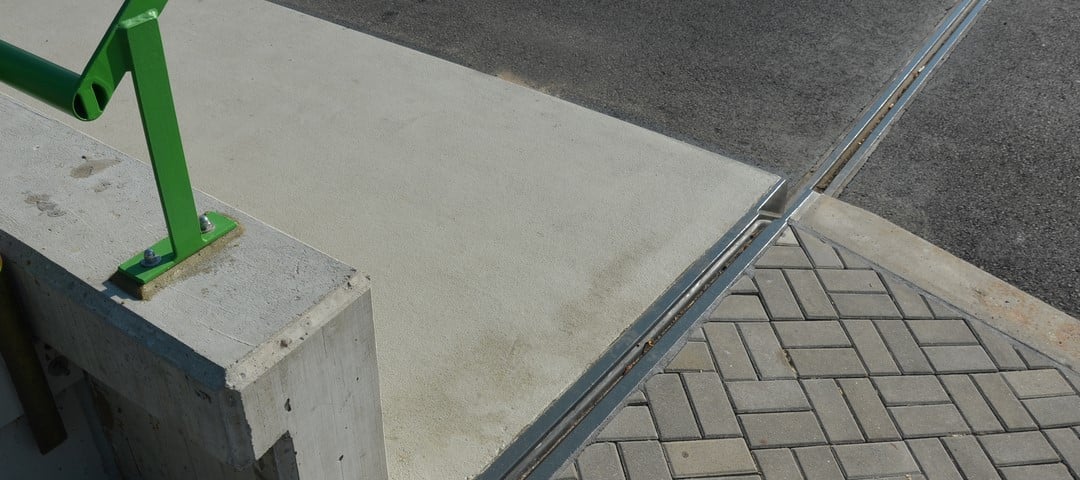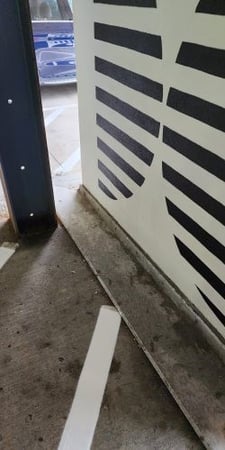Types of Expansion Joints in Concrete Construction
8 minutes read

Overlooked, they can heap maintenance costs and safety hazards onto the everyday stress of your regular project schedule. Fully understood and researched, they can extend the durability of your work.
We’re not talking about choosing concrete materials or construction management software. We’re not even talking about coffee. We’re actually talking about the little (or not-so-little) “bridge” between the bigger components of your build.
In concrete construction, expansion joints help a structure account for movement, which can come from thermal expansion and contraction, traffic, seismic activity, and several other sources.
With so many threats, it’s no surprise that most expansion joint manufacturers carry dozens of specialized systems. Let’s cover the configurations and types of expansion joints so you’re familiar with the full array of options.
First: What You’re Looking for in a Expansion Joint
Don’t forget the challenges that brought you here in the first place.
Products that account for expansion can range from simple, small-movement joint seals to state-of-the-art, large-movement, seismic-capable joint systems. Choosing the correct types of expansion joints in concrete for your specific project requires consideration of several factors.
Factors in choosing a certain type of joint include the following:
- Vertical vs. horizontal – Both types battle against foot traffic, water drainage, and weather-related wear and tear. However, vertical joints must also account for lateral movement and potential seismic activity.
- Traffic-rated vs. non-traffic-rated – Unusually highly trafficked areas need special joints. Traffic can be vehicular, pedestrian, or machine/equipment.
- Covered vs. noncovered – There are scenarios where you’ll want a certain aesthetic or additional protection. This might necessitate a cover for the joint.
- Chemical resistance – Contractors need corrosion-proof expansion joints in swimming pools, industrial areas, and other areas rife with aggressive substances. In comparison, a roof where no one travels regularly might not need such a joint.
- Your favorite filler – Want the best concrete expansion joint filler material for your application? That may eliminate certain joint types from consideration. For example, silicone sealants add flexibility to horizontal, vertical, and other joint types, but aren’t applicable on others.
- Fire codes – Does your joint need to be fire-rated to meet building requirements?
8 Important Types of Expansion Joints in Concrete
Expansion joints are a key element in the construction process because they provide waterproofing, stability, and resistance to heavy traffic over an extended period. However, not every type of expansion joint will provide that sweet relief in your project.
That’s why we’ll cover eight important joint types for commercial construction:
- Horizontal
- Vertical
- Seismic
- Fire-rated
- Compressed seal
- Strip seal
- Inflated
- Rubber gland
1. Horizontal Expansion Joints
These are made from foam materials and are used to create a buffer between concrete slabs.
Benefits of precompressed foam include:
- Better accommodation of movement
- Easier installation
- Improved longevity
These products also come with a factory-applied silicone traffic coating. They typically allow either +30%/-25% or +/- 50% movement, depending on the manufacturer.
Techniques for installing horizontal expanding foam joints can vary by project. Sometimes you can get by with only a backer rod and sealant; other applications might require a liquid system poured into a box out. The site conditions will determine whether you need anchoring.
2. Vertical Expansion Joints
Vertical expanding foam joints come precompressed in packaging. Once you cut them open, these joints will swell into place and stay there under their own back pressure.
At times, this is a straight foam joint designed to be a backer for a sealant joint. More often, they come with a factory-applied silicone facer.
Vertical joints come packaged and are installed roughly the same way as horizontal expanding foam joints. The difference is that you might need safety equipment for high elevations.
Again, these foam expansion joints are lightweight and easy to cut. Many vertical systems accommodate +/- 25% movement; others that are considered “seismic” have +/- 50% movement.
|
Pro Tip: Choosing a type of joint is more application-specific than simply saying “I want/need this material.” For example, a parking garage would require a sealant resistant to fuel and road salt. A vertical expanding joint would be beneficial on masonry where two structures are close enough together to require a joint for aesthetic purposes. |
3. Seismic Expansion Joints
If seismic activity is common in the installation area, you’ll obviously want a specifically rated product for that environment.
Seismic expanding foam traffic joints always have a cover plate. Some are integral to the system, while others simply use a foam joint with a plate anchored to the concrete on one side.
These are installed using epoxy, much like regular horizontal joints. The only difference is the plate is anchored to a central spline in the foam or to concrete with anchors on one side. These products typically see use in joints wider than 4” – whether there’s potential for rumblings or not.
4. Fire-Rated Expansion Joints
These joints contribute to the building’s overall fire strategy, especially in multistory buildings or complexes with specific safety requirements.
Fire-rated expanding foam joints differ from regular joints in a few ways:
- The foam has a fire-retardant impregnation.
- There’s a layer of factory-applied intumescent in addition to silicone.
- The foam is deeper (std. 4-5”, depending on fire rating)
You’ll still find the installation process to be similar to standard joints.
5. Compressed Seal Expansion Joints
Compression seal joints use preformed elastomeric seals that are inserted into the joint opening. They compress and expand with the movement of the concrete, creating a weather-tight transition.
They’re a common sight in both new construction and repair projects and are effective for a range of joint widths. High-end versions also come with impressive UV, temperature, and chemical resistance.
 6. Strip Seal Expansion Joints
6. Strip Seal Expansion Joints
The defining feature here is an elastomeric sealing strip locked into a steel anchor embedded in the concrete. This type of joint is known for its durability and ability to accommodate a variety of movement types, making it suitable for:
- Bridges
- Parking decks
- Other heavy-traffic areas
These joints can withstand the fluctuation of freezing and thawing and provide a high degree of water resistance. With proper maintenance, you can squeeze a long life out of these products.
7. Inflated Expansion Joints
Also called inflatable seal joints, these have a unique talent: changing their shape and size by inflation and deflation. This allows for a high degree of flexibility and adaptability in sealing and accommodating movement between two surfaces.
Typically made from durable, elastic materials like rubber, these joints expand and contract through the introduction or removal of air or another gas.
Inflated expansion joints are viable in a variety of settings, including industrial processes, piping systems, ductwork. They’re particularly valuable where a conventional solid expansion joint wouldn't provide enough flexibility or where you need a tight seal intermittently.
8. Rubber Gland
Last, and maybe least, are rubber gland joints.
Most of these old-school products fall under the wing joint family. Wing joints are generally made of thermoplastic materials and provide an especially secure attachment. This includes the prevention of joint extrusion following substrate movement.
These joints do not accommodate staged construction or customization and require additional manpower to install (4-6 people). If you’re still a fan of rubber glands, they’re viable in:
- Parking structures
- Stadiums
- Other structures where water tightness is key
Precompressed foam joints can often give you sufficient results in a shorter time and for a wider range of applications. If you do need the specific durability and anti-movement qualities of rubber grand joints, be prepared to spend more time on installation and maintenance.
More Tips on Expansion Joint Types, Materials, & Installation
Ultimately, your choice of an expansion joint depends on project requirements. You could even have multiple joint types in the same application that transition to one, then another (i.e. a fire-rated joint transitioning to a roof joint). The best concrete expansion joint product, including the filler material, should match your project’s function and environment.
Working with your distributor to sort out these tricky construction products is a smart, proactive approach. It’s also an easy way to save money on many projects. We’ve seen subcontractors order high-end, traffic-rated material for all 120 ft. of its joints when the construction specs only required 20 ft. to be traffic-quality. We’ve also witnessed the collapse of entire structures because a contractor tried to save a buck today with cheap joints.
No amount of coffee will cure that headache.
Another caffeine-free way to succeed with expansion joints is our blog library. Learn more about expansion joint solutions for your project here:

